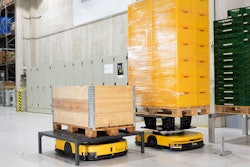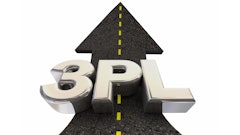
Product lifecycle management (PLM) solutions have long been a pillar for discrete manufacturing, enabling organizations to streamline processes and enhance product innovation and development. However, process manufacturing industries – such as those related to food and beverage – have not adopted the technology as aggressively due to the uniqueness of their business processes. Most large enterprise PLM solutions have been built around discrete manufacturing processes and often do not support the specific needs of process industries.
As companies face increasing demands to enhance efficiency, maintain compliance, and meet sustainability goals, they must rethink their solution strategies and business processes to fully unlock the promise of digital technologies. For the food and beverage sector, global expansion, regulatory constraints, and complex formulation, recipe, and labeling requirements have intensified the need for enterprise PLM technologies in these industries. Additionally, the implementation of a versatile digital thread as part of the PLM strategy has become a mandatory component of any solution architecture.
Understanding PLM and the digital thread
PLM serves as the backbone for managing product data, version control, change management, cross-functional collaboration, and many other functions. For process industries like food and beverage, PLM provides a flexible yet structured approach to managing complex formulations. It ensures precise ingredient traceability and helps organizations stay aligned with evolving regulatory standards.
A digital thread can be thought of as a comprehensive, seamless flow of data throughout the lifecycle of a product or process. It creates a single, unbroken thread of information that starts from a product’s conceptualization and weaves its way through design, production, quality assurance, distribution, to the product’s end of life. Unlike outdated approaches, where data is fragmented across silos and departments, a digital thread ties everything together in a cohesive manner.
In food and beverage manufacturing, where operations involve complex formulations, batch processing, and strict safety and quality regulations, the digital thread provides a vital connection across the entire production cycle. By linking siloed data regardless of their physical location, organizations can harness real-time and historical insights to improve decision-making, ensure compliance, and proactively address issues before they impact production or quality.
Implementing the digital thread and PLM
Implementing a PLM platform that enables a robust digital thread empowers food and beverage manufacturers to improve transparency, enhance decision-making, and accelerate innovation cycles.
Before embarking on a digital thread and PLM initiative, organizations must define clear objectives for their organization. Companies’ digital thread use cases will inevitably grow over time. Whether the goal is to improve regulatory compliance, optimize operations, or reduce time to market, establishing measurable KPIs is essential for guiding implementation and assessing impact. Regular performance reviews and benchmarking drive continuous improvement and long-term success.
To maximize value, companies will integrate their PLM solution with enterprise resource planning (ERP), manufacturing execution systems (MES), and quality management systems (QMS) to create an authoritative source of truth. This approach ensures consistency, accessibility, and alignment across the product lifecycle. By leveraging cloud-based solutions and API-driven integrations, organizations can enable seamless data exchange and gain real-time insights across departments, fostering agility and informed decision-making.
To successfully integrate PLM and the digital thread, organizations should consider the following best practices:
● Adopt a flexible, scalable platform – Many manufacturing environments rely on legacy systems that create data silos and hinder digital transformation. Cloud-based PLM platforms and open, modular digital thread solutions allow organizations to scale implementations at their own pace, ensuring seamless integration with existing systems. Low-code capabilities empower business users to adapt workflows without heavy IT dependencies, increasing agility and adoption.
● Foster cross-functional collaboration – Collaboration drives innovation, and the digital thread ensures seamless data flow across teams. In process manufacturing, where R&D, production, quality assurance, and supply chain management must work in sync, a connected digital thread eliminates silos and delivers the right information to the right people at the right time. By sharing real-time insights, teams can improve decision-making and efficiency. This seamless connectivity accelerates problem-solving and drives continuous improvement across the product lifecycle. Additionally, the combination of advanced collaboration and data transparency is critical for today’s smart manufacturing objectives.
● Leverage data and AI-driven insights – A unified digital thread unlocks opportunities for predictive analytics, machine learning, and AI-powered process optimization. By analyzing historical and real-time data, manufacturers can identify trends, anticipate equipment failures, and refine formulations to enhance efficiency, improve yield, and reduce waste. Better data quality, better insights.
● Automate compliance and product traceability – Given the rigorous regulations in food and beverage manufacturing, a robust PLM strategy should include automated compliance tracking, audit trails, and full traceability across the product lifecycle. Digital thread capabilities should streamline documentation, reducing the risk of non-compliance and improving supply chain visibility. Incorporating digital signatures and secure, tamper-proof records strengthens compliance integrity. Advanced product traceability is critical to improving an organization’s ability to effectively manage product recalls.
● Connecting the digital thread and digital twin – A digital twin is a virtual model of a physical process, powered by the digital thread. By integrating real-time and historical data, food and beverage manufacturers can simulate operations, predict equipment failures, and optimize resources without disrupting production. This enables cost reduction, improved efficiency, and risk-free testing of new processes before real-world implementation.
Leveraging the digital thread in food and beverage manufacturing
The food and beverage industry faces some of the most stringent regulatory requirements, with evolving safety standards, labeling laws, and supply chain transparency mandates. The digital thread enables manufacturers to enhance traceability, streamline formulation management, and ensure compliance across key areas such as:
● Ingredient traceability and recall management – The digital thread enables end-to-end ingredient tracking, allowing manufacturers to quickly respond to recalls, contamination risks, and regulatory audits. This improves consumer safety while reducing financial and reputational risks.
● Recipe and formulation management – A robust digital thread streamlines formulation management by ensuring recipe modifications are accurately documented, tracked, and approved. It also enhances collaboration between R&D and production teams, maintaining consistency in taste, texture, and nutritional content.
● Sustainability and waste reduction – By leveraging predictive analytics and digital twins, food and beverage manufacturers can optimize ingredient sourcing, reduce production waste, and lower energy consumption. Data-driven insights also support the development of sustainable formulations that maintain quality and comply with regulations.
● Regulatory and labeling compliance – With varying regulations across markets, the digital thread ensures product labeling meets regional requirements. Automated tracking of ingredient changes and allergen declarations helps prevent compliance violations and ensures accurate ingredient usage in the right markets.
The recipe for success
In food and beverage manufacturing, logistics, and supply chain operations, the recipe for success involves more than just implementing the latest technology. It requires a fundamental shift in how data is managed and leveraged across the enterprise. By integrating the digital thread with PLM, organizations can establish a unified, reliable source of product data that enhances efficiency, ensures compliance, and drives sustainable innovation.
As regulations tighten and consumer preferences evolve, the industry will only grow more complex. Organizations that embrace digital transformation will gain the agility needed to adapt, innovate, and stay competitive in an ever-changing market.



















